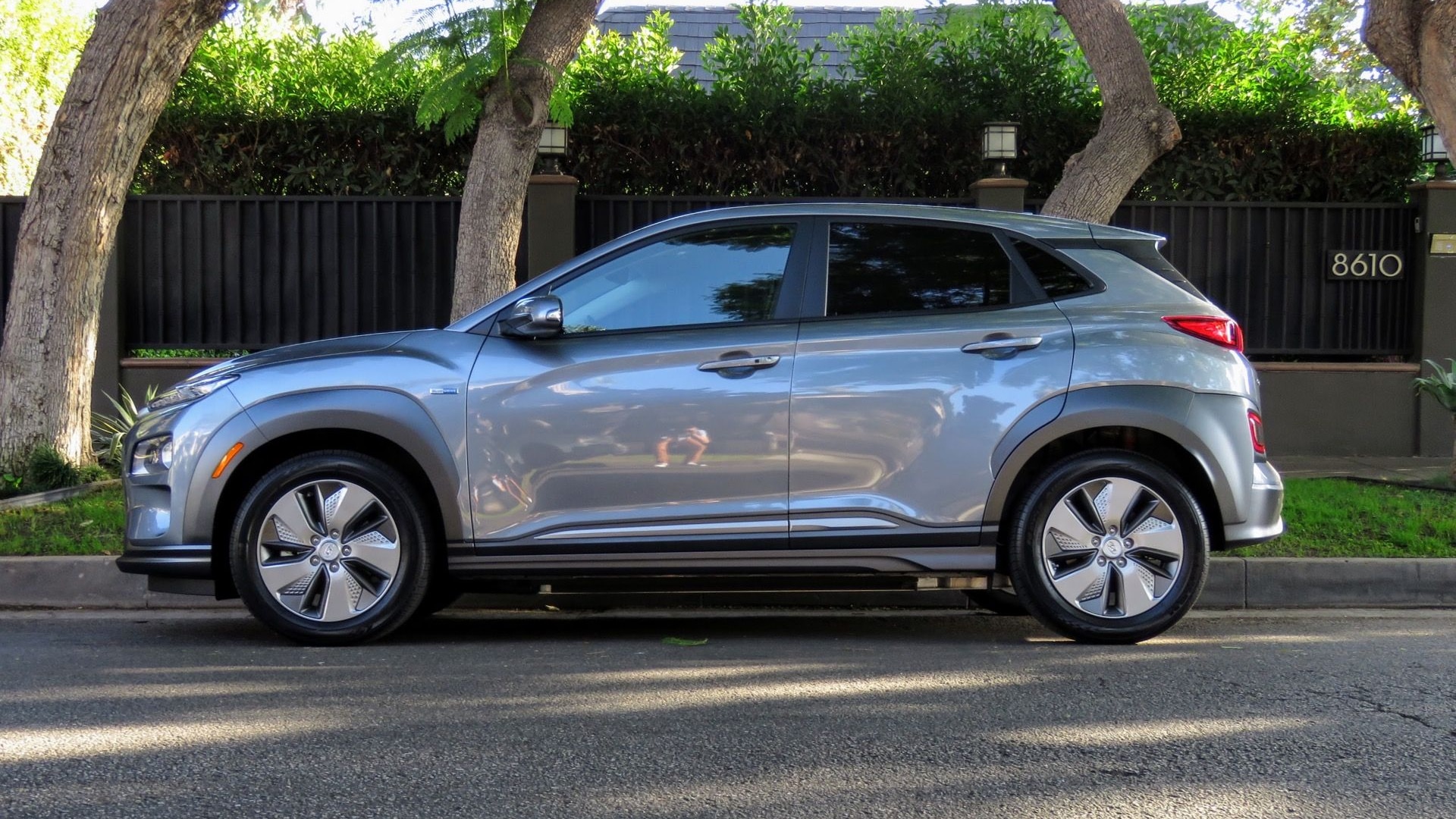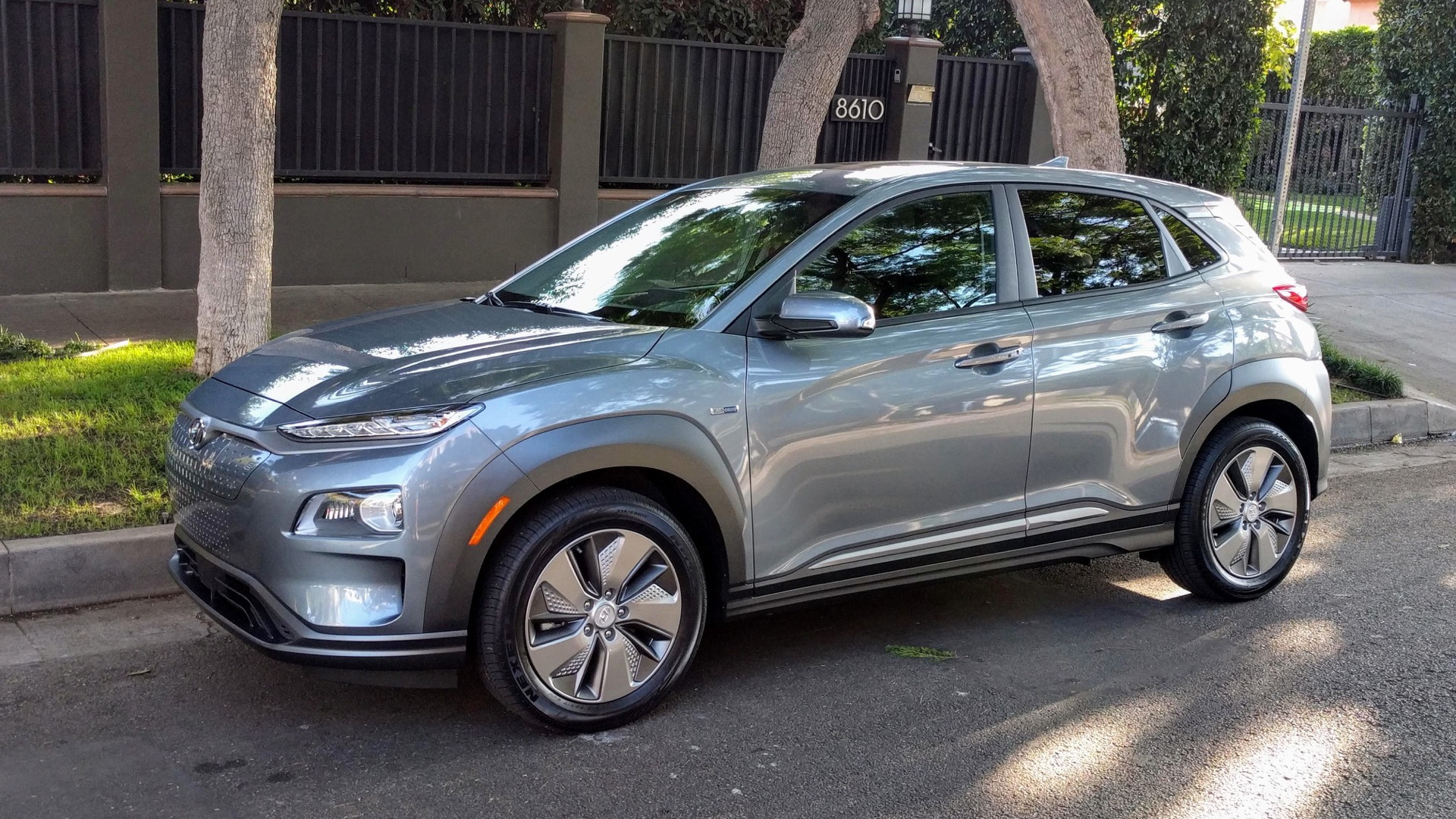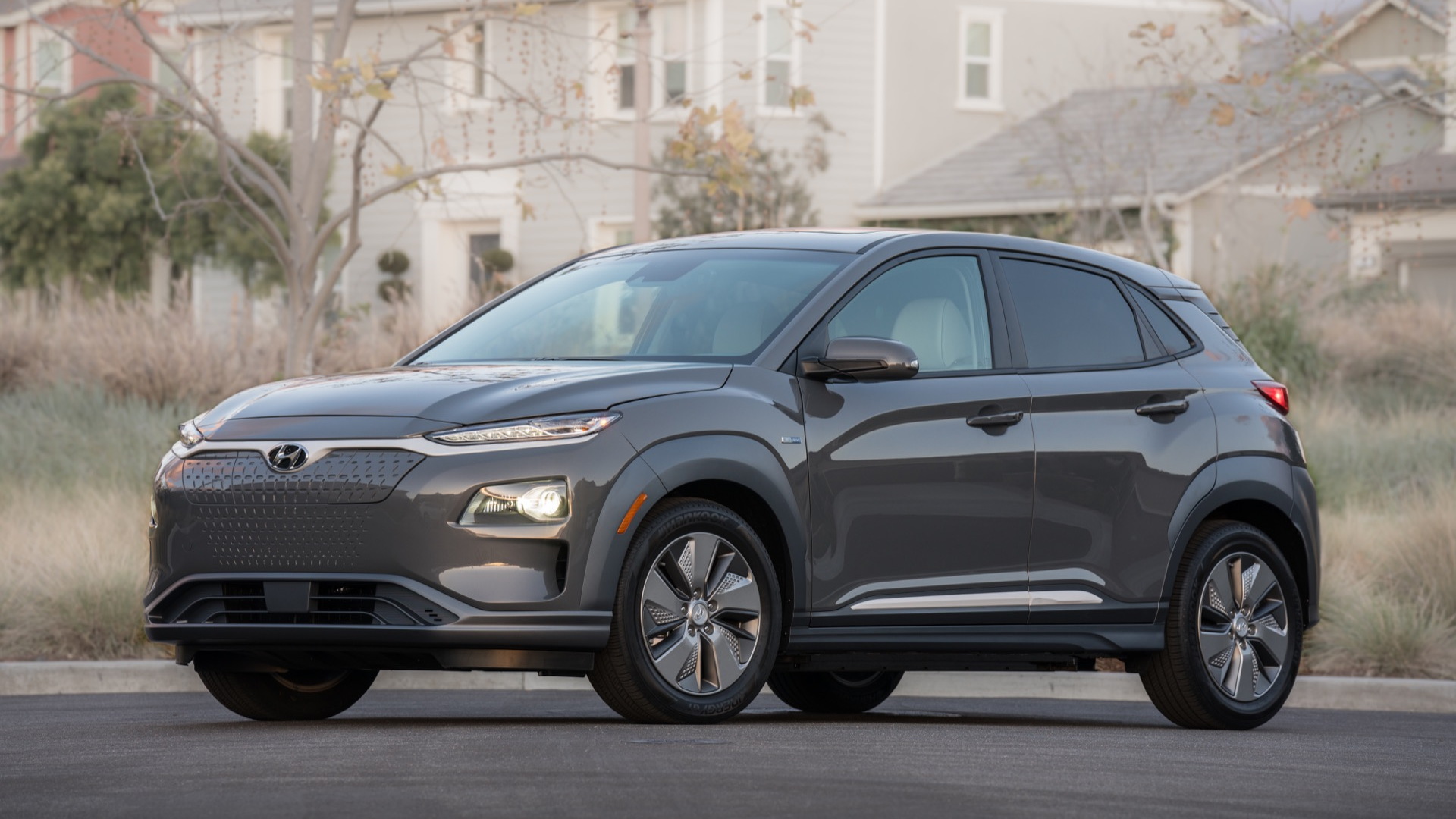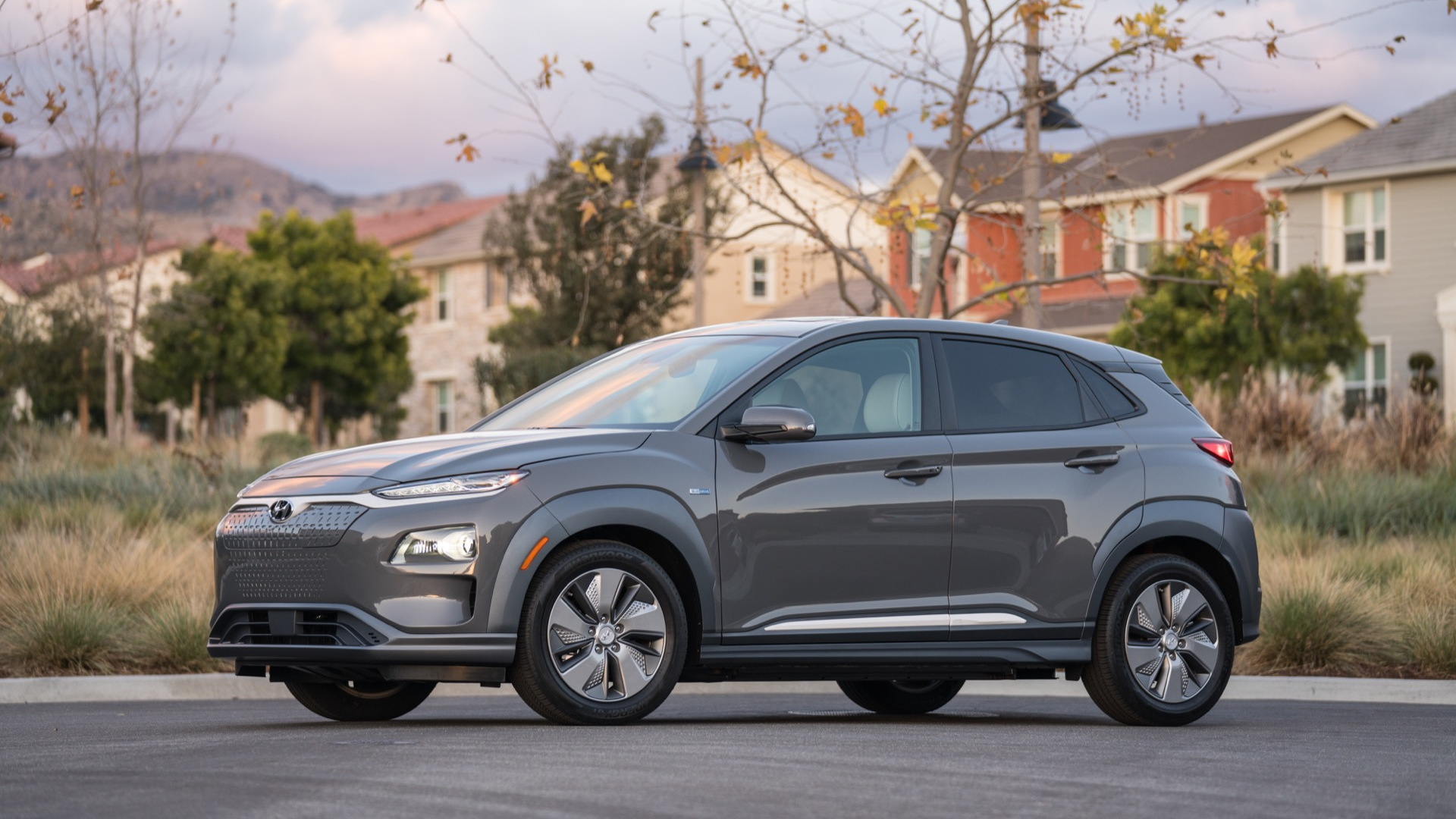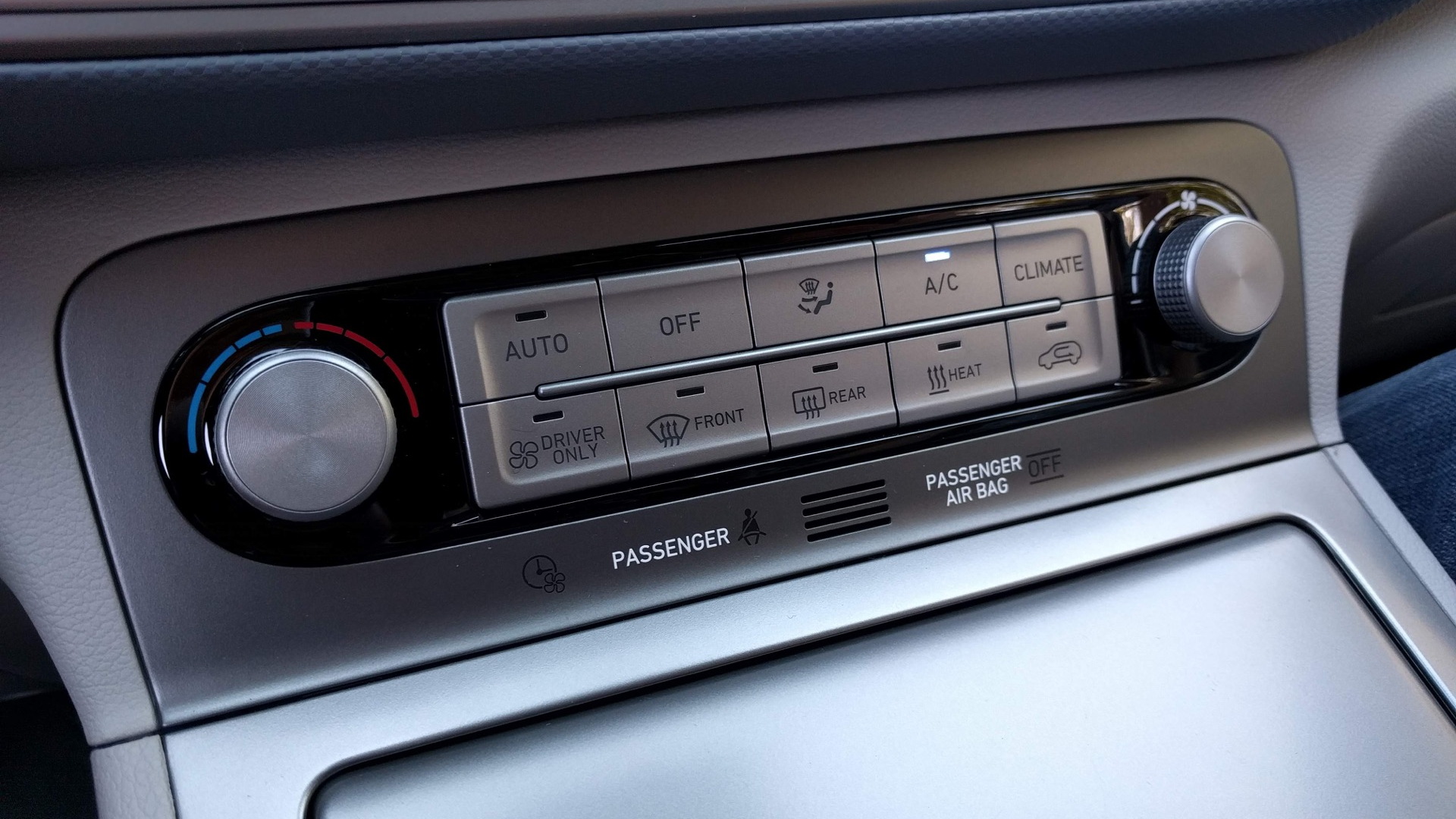It’s a use case that many of the Kona Electrics Hyundai sells in the U.S. are likely to encounter. The company sees about 80 percent of the current U.S. market for EVs such as the Kona Electric in California, and company officials described a pecking order to it: California first (in January 2019), then the rest of CARB ZEV states, and then the rest of the nation. But in this year that Tesla is leading sales of all-electric models to new highs, it’s a travesty for Hyundai to limit it to what sounds, at the start, like a compliance machine—especially for a vehicle that, based on our preliminary impressions, is this good.
CHECK OUT: 2019 Hyundai Kona Electric rated at class-leading 258 miles of range
As you scan downward in this first drive report, there are a couple things we really can’t comment about yet: pricing, which won’t be detailed for a little while, and the Kona Electric’s 258-mile driving range, which is the most currently EPA-rated for any non-Tesla model. Our drive route included a lot of elevation changes, and we finished our drive of the Kona Electric at a lower elevation than where we started. It wasn’t surprising that the range estimator adjusted upward.
The Kona Electric instantly strikes us as a more “normal” vehicle than its obvious cross-shop rival, the Chevrolet Bolt EV. Both are price-conscious electric crossover-hatches with mammoth “skateboard” battery packs stocked with LG Chem cells (pouch for the Bolt EV, prismatic for the Kona Electric). The Hyundai is slightly lower and wider than the Bolt EV, but it rides on an identical 102.4-inch wheelbase and 164.0-inch overall length.

2019 Hyundai Kona Electric
Cabin priorities are starkly different between these two, though. For instance, even though the Bolt EV has about three inches more rear legroom by the official numbers, the Kona Electric feels more spacious in back because its sides don’t taper as aggressively upward—revealed by the Kona’s nearly two-inch advantage in rear shoulder room. Lift the hatch and you get the same cargo capacity as in gasoline versions, and the 60/40-split rear seatbacks flip forward to a flat floor
DON'T MISS: 5 things about the 2019 Hyundai Kona Electric
It’s easy to get in and get comfortable in the Kona Electric. Seats aren’t as high as most SUVs and crossovers, and there’s plenty of headroom. The front ones are more generously padded than in the Bolt EV, and the lower seat cushions are longer, for more thigh support—a big difference for this tall driver.
Gas gone electric—but you might not know
While there’s no gasoline Bolt EV, there is a gasoline Kona, and it’s one of the finest (and newest) specimens of the compact crossover class—neither conceived to look too outdoorsy nor aiming too far afield in design. To take it electric, Hyundai gave it a smoothing-over that makes the whole design a whole lot less busy than the gas model, but carried the rest of the goodness forward. The sharp squint of the headlamps are the most overt aspect of the design; otherwise the Kona feels a bit like a stylish hatchback car that’s gone sans serif and sans italics. Cargo space is abundant, rear seatbacks fold flat, and there are none of the sore compromises that can call out a compliance car [whether it is or not, well, we’ll get to that].

2019 Hyundai Kona Electric
Hyundai has added what it calls a “bridge-type center console with high-tech image.” Translation: With shifting between Park, Reverse, Neutral, and Drive performed by four big buttons replacing the traditional shift lever (with the parking-brake toggle just behind), there’s a lot more space freed up for a large storage area below.
READ MORE: 2019 Hyundai Ioniq preview
A drive mode button, important to note, is also atop the bridge. There are three primary charge modes: Eco, Normal, and Sport, each with a different calibration for how the accelerator and steering boost respond. Hold down the button for a few seconds and you’ll get to a fourth, Eco+, which essentially just cuts out the climate control.

2019 Hyundai Kona Electric
Out on the open road (yes, we did get some of that, too), the Kona Electric feels very perky, with its permanent-magnet motor delivering 201 horsepower and 291 lb-ft of torque. Even if the calibration doesn’t make it feel quite as uproariously enthusiastic and tire-burning as the Bolt EV off the line Hyundai says it has the same 7.6-second acceleration to 60 mph. The Kona Electric can reach a top speed of 104 mph versus the Bolt EV’s 90.
As we zigzagged on canyon two-laners, the Kona Electric really underscored the car side of the equation. It feels sporty and more balanced—likely the result of a better weight distribution and lower center of mass, even though it likely can’t muster as many Gs in corners as those other versions on its low-rolling-resistance tires. The Kona Electric gets an upgrade to a trailing-arm independent suspension, replacing the torsion-beam setup in the gasoline Kona, plus a front subframe bushing and hollow stabilizer bar, so that may help with the impression.
The best brake-regen functionality yet?
There are three levels of regenerative braking in the Kona Electric—0, 1, 2, and 3, with 3 being the most aggressive and 0 being freewheeling/coast mode. The car defaults to 1 for Normal and Sport modes and 2 for Eco, and you can click up the regen with the left paddle or down with the right paddle. But here’s where it all gets interesting: It doesn’t have to be that way. Hyundai has smartly decided to make those default levels of regen for each drive mode customizable via menus on the instrument cluster. So if you set the default to 3, you can get a strong almost-one-pedal level of regen every time you get in.
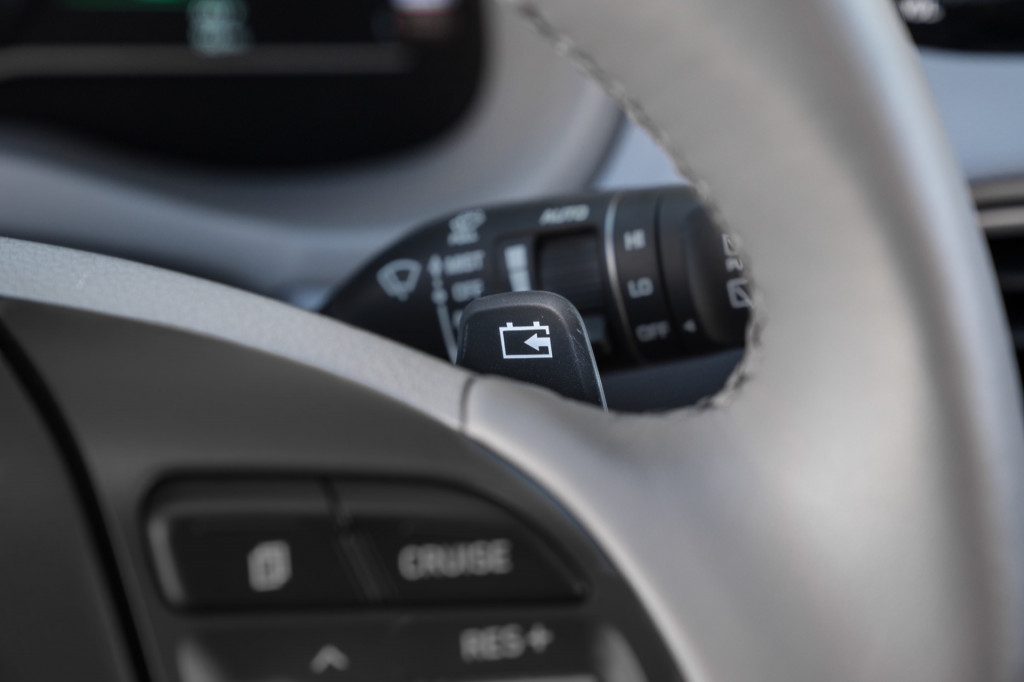
2019 Hyundai Kona Electric
Doing a longer pull on the left paddle serves two purposes. Do it as you’re coasting down and it enables the system’s maximum brake regen of 0.25g (a slight step more than ‘3’). Or do it as you’re gradually slowing to a stop and it disables creep, allowing you to gently (the operative word) reach a stop without pressing the brake pedal, until you start back up. It’s almost one-pedal driving.
A smart regeneration mode uses the radar sensors from the adaptive cruise system to automatically adjust your regen mode up or down. We did try this system, which engages via vehicle-configuration menus on the instrument cluster, for a short distance and couldn’t fully understand what it was doing in traffic and why. We’ll update you in the future, over a longer drive on familiar roads.
One other impression held every step of the way: This is a very quiet vehicle inside. With acoustic glass for the windshield and front side windows to help keep wind whoosh out, a suite of underbody covers and deflectors that double in keeping road noise away, and any motor whine well-muted, the only thing that finds its way into the cabin at city speeds is the intergalactic whir of Hyundai’s low-speed pedestrian warning.
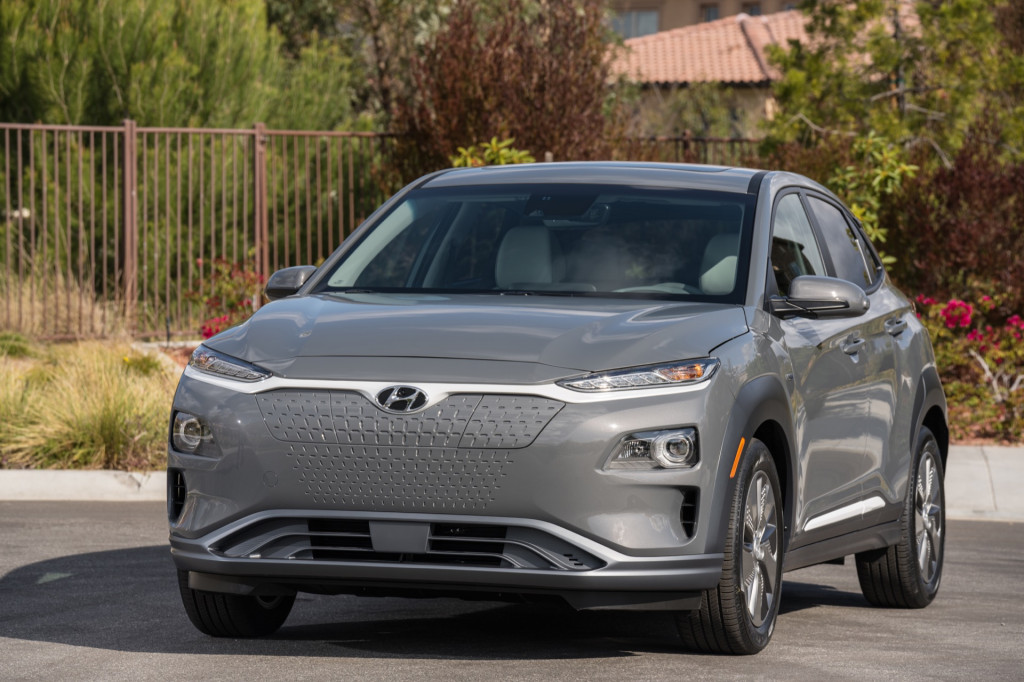
2019 Hyundai Kona Electric
Hyundai has, through all these wind-cheating measures (the active front fascia included), cut the coefficient of drag to a low 0.29. That may play a part in the Kona Electric’s MPGe ratings of 120 combined (132 city, 108 highway)—versus 112 combined (125 city, 100 highway) for the Nissan Leaf.
Charging: light and fast, with thoughtful controls
The big pack is liquid-cooled and uses LG Chem prismatic cells; the entire battery system weighs less than 1,000 pounds, and by weight the pack’s energy density is 141.3 wh/kg—better than that of the Bolt EV, which uses LG Chem pouch cells. In terms of total curb weight, the Kona Electric weighs only slightly more than a top-trim gasoline model (about 3,400 pounds).
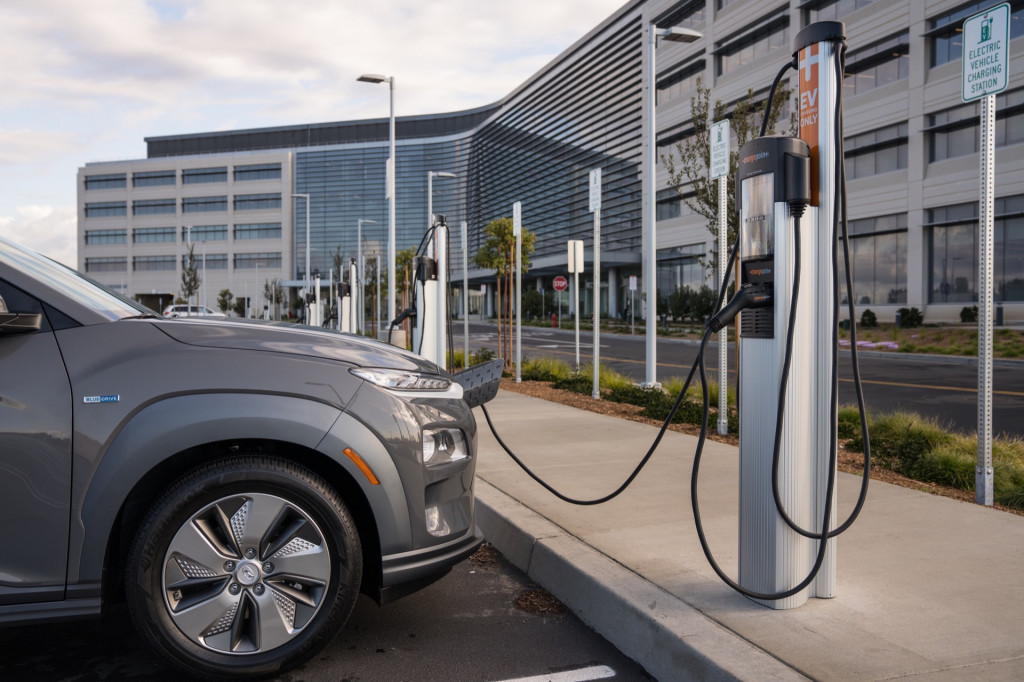
2019 Hyundai Kona Electric
DC fast charging is standard on all versions of the Kona Electric (it points out, rightly so, that’s not the case for the Chevrolet Bolt EV and Nissan Leaf). It lists 9 hours and 35 minutes as the charge time at Level 2, using the AC onboard charger rated at 7.2 kw. And for cold weather, a battery warming feature helps speed up slower charging. A Hyundai official did not care to cite an official time for Level 1 (120V) AC charging, suggesting (as the numbers do) that it would take most of a weekend.
If you can find any of the latest 100-kw or 150-kw DC fast charging stations, the Kona Electric is (somewhat) ready to take advantage of the added power. With either, the big 64-kwh pack can regain up to 80 percent in just 54 minutes. Hyundai now specifies that translates to a power of 70 kw—or in Ohm’s Law napkin math, 71.2 kw, as the system draws a maximum of 200 amps at its 356 volts.
The Kona Electric comes with straightforward features for charge scheduling and charging limits—like being able to set the maximum percentage for AC or DC fast charging with a simple slider on the touch screen. All models come with three years of Blue Link telematics services that link with Google Home and allow app-based features like remote start, remote lock/unlock, climate preconditioning, destination voice search, a car finder, and remote management of charging. Some of these features can be managed with Android Wear devices and Apple Watch apps.

2019 Hyundai Kona Electric - charge limit setting
Between SEL, Limited, and Ultimate, you get the same battery size, performance, and charging speed. The difference is mainly whether you find certain safety or convenience features critical. The SEL comes with heated front seats, Android Auto and Apple CarPlay connectivity, and a suite of safety systems (forward collision warning, blind-spot warning, driver attention warning). Limited models add a moonroof, power driver’s seat, and Qi wireless charging, among other extras, and the Ultimate is the way to go for the top 8-inch infotainment and Infinity audio, plus a flip-up head-up display, rain-sensing wipers, ventilated front seats, and a heated steering wheel.
The Ultimate also includes adaptive cruise control, and those sensors are put to use with forward collision avoidance (with pedestrian detection) and the smart regenerative-braking mode.
A few shorts in the long game
One surprise is that the Kona Electric won’t include a heat pump, which can in some climates improve driving range by up to 20 percent (so say suppliers) by reducing the amount of resistive heating needed.
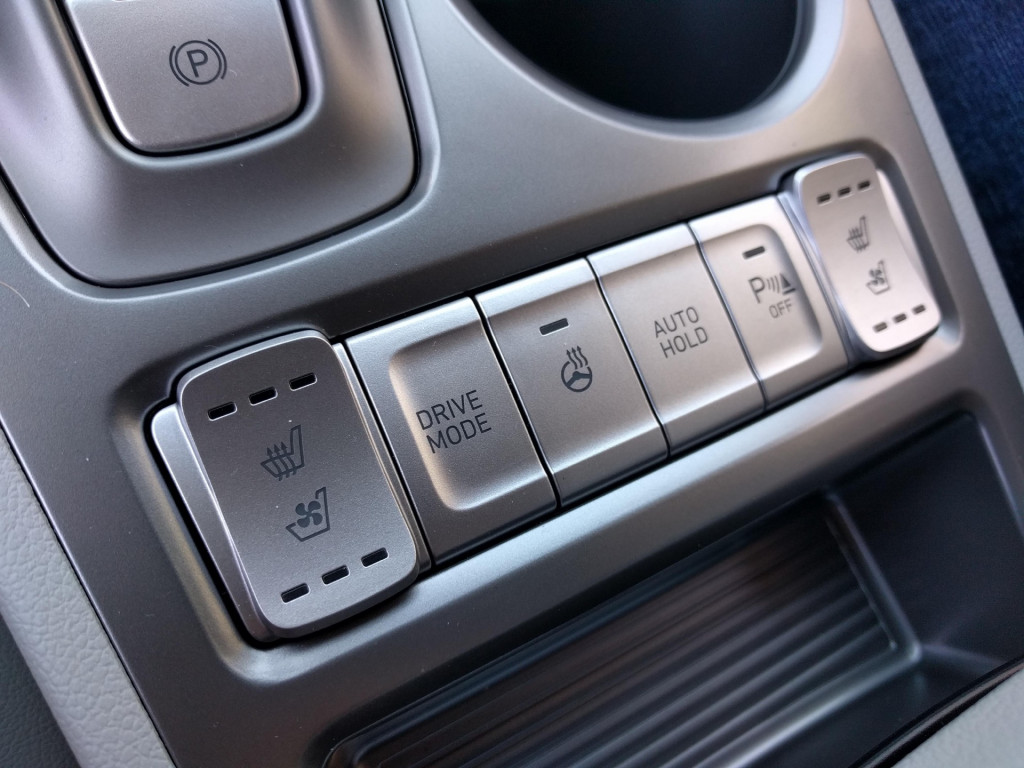
2019 Hyundai Kona Electric - First Drive - Hollywood, CA
One turnoff was the legibility of the instrument-panel theme, which subs in thin gray lettering on matte-metallic button faces and proved challenging at some angles on a bright, sunny day. Perhaps it’s better at night, but we wished they’d just kept with the gasoline models’ white lettering on black buttons.
There’s really little else to quibble about here. Perhaps the most grievous misstep is its limited availability. Hyundai officials confessed that part of the reason behind that is how the U.S. is being allocated fewer Kona Electrics than it knows it can sell. It’s working on that.
At first look, what we see is quite the sweet spot to win over new electric-vehicle drivers. If shoppers still unsure about EVs actually see the Kona Electric at dealership lots, the performance, driving range, and thoughtful features—with the affordability Hyundai has suggested—may altogether be the convincing argument they’ve been waiting for.
IB Automotive accepted lodging plus some meals and travel expenses in order to bring you this first-person drive report.
